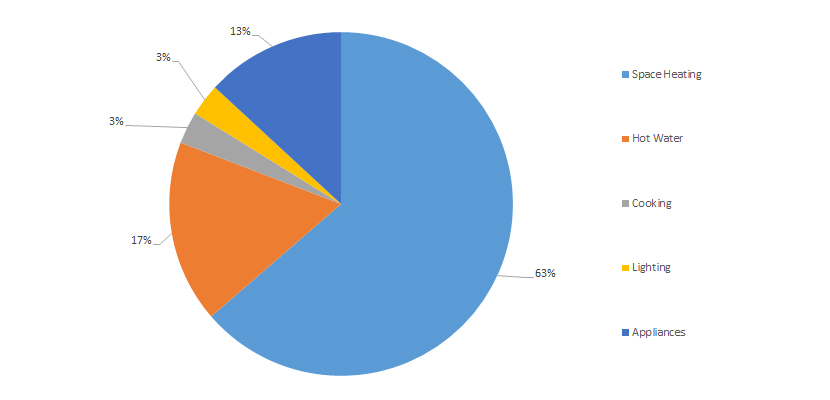Published on March 17, 2020 by Varad Sharma
Technological disruptions and climate change – both of which have a direct impact on our lives –have been widely debated at the global level across industries. The construction and building materials industry has not been exempt, with technological disruptions seen in the form of smart homes, and climate concerns resulting in a proliferation of green buildings.
As the industry adapts to technological advancements, construction companies are compelled to alter their products and services, and devise new building processes, paving the way for new investment opportunities. We believe companies in Europe, such as Kingfisher, Travis Perkins, Kingspan, Ferguson, and Forterra, can capitalise on these opportunities by reorienting their offerings.
Given that the construction industry, accounting for nearly 6% of global GDP, is the single largest consumer of resources and raw materials, we believe it is imperative that the quality of both construction and materials employed be enhanced, to ensure a sustainable environment.
Energy-efficient buildings gaining prominence
With increasing focus on energy saving around the world, and particularly in Europe (where buildings consume 40% of energy generated), energy-efficient buildings have become the need of the hour. In fact, Europe plans for all new buildings to consume nearly zero energy by 31 December 2020, in line with the Energy Performance of Buildings Directive 2010.
A number of standards have been formulated in the past two decades to gauge energy efficiency of buildings, starting with Leadership in Energy and Environmental Design (LEED) developed in 1998 by the US. Another standard, the Bâtiment Basse Consommation (BBC) followed in France, defines a consumption target of 50kWh of primary energy per square metre of net floor area.
Figure 1: Increasing number of building certifications

Source: Ramboll
In the UK, energy consumption in homes is driven mainly by space heating, as per the Committee on Climate Change (CCC), accounting for 63% of annual energy consumption. This is followed by energy use for hot water at 17% and appliances at 13%.
Figure 2: Breakdown of energy consumption in UK homes, TWh (2017)

Source: Committee on Climate Change, UK
Existing buildings can be upgraded to meet energy-efficiency standards through several measures without incurring much cost. New buildings require less than 3-5 litres of heating oil per square metre per year compared to the nearly 25 litres that older buildings need. The CCC estimates that 15% energy saving is possible by 2030 by insulating 7.5m walls and lofts in homes; making 124 glazing improvements; and enhancing draught proofing, hot water efficiency, and heating controls.
Technological advancements in buildings and construction
With technological dependence continuing to grow, demand for buildings with embedded services other than energy efficiency and cost effectiveness is also increasing. For example, Bouygues Construction launched Wizom in 2017 in France, connecting 1,000 homes through the internet of things (IoT). The global smart home market is estimated to be worth more than EUR45bn in 2022. Penetration is projected to reach 20% of new constructions in Europe by 2022 from 5% in 2017. This indicates that consumers are willing to spend on technology-enabled homes; expenditure is forecast to rise by 70-80% in North America, Asia and Europe by 2022.
Fig 3: Smart home technology impacting every nook and corner of a home

Source: Roland Berger
Winds of change in building processes
-
New construction methods – such as Building Information Modelling (BIM), modular construction, and 3D printing – are making radical changes to the industry. BIM creates a digital model of a building structure and allows early modifications (both in design and planning), while modular construction involves assembly of pre-fabricated building units. 3D printing promises to increase onsite efficiency by up to 80% by facilitating the creation of purpose-built shapes.
-
New building materials used – such as Brikawood bricks, mycelium, ashcrete, and hempcrete – offer better insulation and lower greenhouse gas emissions, all at a lower cost than bricks and concrete.
In a nutshell, green buildings and smart homes are more end-user friendly, but also offer a wide range of opportunities for building material and construction companies.
At Acuity Knowledge Partners, our Investment Research team helps financial services clients stay up-to-date on new investment frontiers, industry trends and evolving business models. This includes deep-dive analyses, thematic research, competitive landscape analyses and coverage of companies. Our team of fundamental research experts and data experts can provide optimal solutions by combining alternative data and technology expertise to provide differentiated research insights.
Sources:
1. Shaping the Future of Construction: A Breakthrough in Mindset and Technology, World Economic Forum, May 2016
2. Sustainable Buildings Market Study 2019, Ramboll, June 2019
3. UK housing: Fit for the future?, Committee on Climate Change, February 2019
4. Hot trends in construction: A new era of opportunities, Roland Berger, September 2018
What's your view?
About the Author
Varad Sharma is part of Acuity Knowledge Partners’ Investment Research team. He has over eight years of experience and currently supports a buy-side client with research assignments. Varad holds a Post Graduate Diploma in Management (PGDM) with a specialisation in Finance from the Institute of Management Technology, Hyderabad and a Bachelor in Engineering (Mechanical) from the University of Pune.
Like the way we think?
Next time we post something new, we'll send it to your inbox









